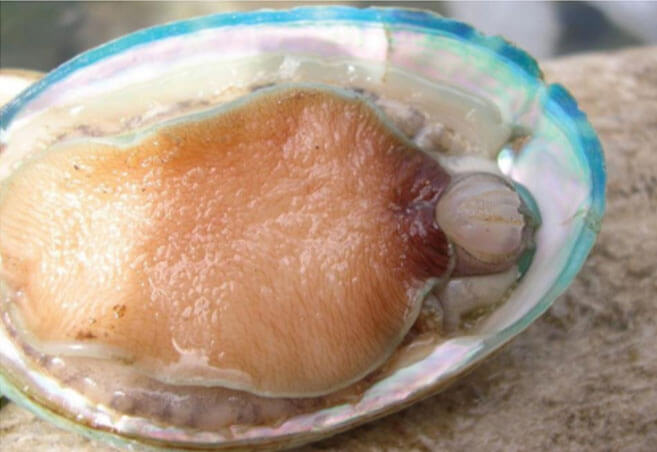Urgent Action needed to protect the Mallacoota abalone industry from sea urchin influx
Long-spined sea urchins are spreading through the Eastern Victorian marine area. They strip the reef of vegetation and create ”barrens” that cannot support other marine life. Helen Burvill Executive Officer of the Eastern Zone Abalone Industry Association, has advised that the sea urchin problem has now become urgent.
Abalone licence holders in Mallacoota are requesting the Victorian state government to act quickly. Tim Bull, Member for Gippsland East raised this issue in Parliament 22nd February. EZAIA and its members will continue to push for Government action!
2023 Calendar
The inaugural 2023 Victoria’s Abalone Diver calendar recognizing what industry does and supporting mental health.
We are very excited to share some great photos of the people in our industry and the work they do. Feel free to download our new Calendar.
Abalone Disease Re-occurs in Wild Abalone in Victoria
Abalone Viral Ganglioneuritis (AVG), also known as abalone disease, is a viral disease which affects the nervous system of abalone and results in curling of the foot, swelling of the mouth, leading to weakness and death of abalone.
AVG has no known effects on human health.
Incidence and Spread
The disease, which is caused by a herpes virus, was first detected in Victoria in December 2005. The last recorded instance of disease in Victoria was in January 2010 at Cape Otway.
The disease was again confirmed in the Cape Nelson area on 2 May 2021. Since then, further detections have been made at several locations well within the Control Area.
The disease has been confirmed in Victoria as far east as Cape Otway and as far west as the Discovery Bay Marine Park.
It can spread through the water from infected abalone or abalone product (offal, shells or mucus), fishing equipment (including wetsuits, anchors, rock lobster pots and ropes) and via people who have come into contact with infected abalone.
The disease can cause high mortalities in both farmed and wild abalone populations. To date, species known to be susceptible to AVG in Australia are greenlip abalone (Haliotis laevigata), blacklip abalone (Haliotis rubra) and hybrids of these two species.
AVG is a notifiable disease. If any divers suspect AVG in abalone, please report it immediately to the 24-hour Emergency Animal Disease Watch Hotline on 1800 675 888.
Symptoms of AVG
In wild abalone in Victoria, there may be high mortality; usually only shells are present, as a result of predation on affected abalone. In farmed abalone, signs include:
- swollen mouth parts, occasionally with the mouth protruding from under the anterior foot (where it is usually only partially visible)
- reduced pedal adhesion to surfaces
- absence of marked foot extension seen in the righting reflex of healthy abalone
- curled mantle edge
- high mortalities (up to 90%)

Source: Aquatic animal diseases significant
to Australia: identification field guide 5th edition
Biosecurity Protocols
Decontamination Processes for Eastern Zone Abalone Industry Association (EZAIA) commercial divers, members and boat operators.
If you find sick Abalone:
Please call Disease Watch Hotline (1800 675 888) or in Victoria the Fish Reporting Line 13FISH (133474)
Know the rules of the state you reside in and operate in:
NSW Department of Primary Industries Click here
Agriculture Victoria: Click here
Eastern Zone season runs from 1st April to the end of March.
Links
Agriculture Victoria
https://agriculture.vic.gov.au/biosecurity/animal-diseases/abalone-disease
Victorian Fisheries Authority
https://vfa.vic.gov.au/operational-policy/pests-and-diseases/abalone-disease
Abalone Disease Fact Sheet – Link
https://vfa.vic.gov.au/__data/assets/pdf_file/0008/687644/GG2021G026.pdf
Interstate Notices
National Pest and Disease Outbreaks
https://www.outbreak.gov.au/current-responses-to-outbreaks/abalone-virus-ganglioneuritis
As an operator in the Victorian Abalone Eastern Zone fishery – things you can do:
Decontamination: Boats
– Should be washed down as soon as possible after leaving the water.
– Mallacoota Abalone Ltd has provided a temporary wash down area at the co-op with a chemical that is known to kill the virus. Please follow the guidelines of MAL and treat the equipment with care and respect ready for use by the next operator.
– If you are not able to use the area at MAL please use soapy water or truckwash between each dive.
– All organic matter from inside and outside the vessel should be removed.
Decontamination: Wetsuits and Dive Equipment
– Wash wetsuits inside and out using a neoprene wash (available from dive and surf shops)
– Dive equipment, buoyancy vests, regulators, masks, gloves that have not come into contact with abalone can be washed down in soap free water.
– Equipment that has come into contact with abalone – including catch bags, gloves, knives and measuring devices should be washed in soapy water for 30 minutes then rinsed.
– ALL Bins returned from processors from all states SHOULD be re-sanitised before being used in Eastern Zone
– Bin dividers are now single use only, this applies to dividers being shipped to processors other than MAL.
– Using dividers for local abalone to the local co-op being MAL does not need to be single use.
– EZAIA members have funded supply of this poly and divers are allocated roll quantity depending on quota they fish for.
Decontamination: People and Clothing
Divers who come into contact with abalone should:
– Wash their hands with soapy water
– Spray any waterproof clothing with soapy freshwater and rinse
– On returning home wash clothes with laundry detergent
– Decontaminate vessels, wetsuits, dive-equipment and clothing, which weather permitting should dry before reusing.
Be part of our
vision
The next time you are looking for unique seafood taste experience why not try some beautiful wild-caught abalone. Each one has been hand-harvested by an experienced diver from the depths of the cold pristine waters in one of the Mallacoota reef areas of the Tasman Sea.
Cooking abalone is not as difficult as you might think.
